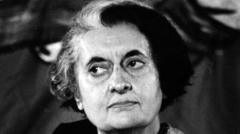The recent suicide of 34-year-old Atul Subhash, a Bengaluru software engineer, has escalated discussions on the complexities surrounding India’s dowry law. Leaving behind a compelling 24-page note and an 81-minute video, Subhash attributed his despair to harassment during his divorce from estranged wife Nikita Singhania and accused her family of extortion. His death triggered a wave of protests led by men's rights activists, sparking criticism of the law originally intended to protect women from dowry harassment. While some claim the law has been weaponized against men, women's rights advocates warn that dowry demands continue to claim lives, with thousands of brides killed annually.
Man's Suicide Sparks National Debate on India's Dowry Law

Man's Suicide Sparks National Debate on India's Dowry Law
The tragic death of Atul Subhash has ignited conversations around the misuse of India's dowry law, highlighting men's rights issues.
On December 9, Atul Subhash ended his life, leaving a profound impact on the ongoing dialogue concerning dowry-related grievances. The placard found beside him reading "justice is due" signified not only his despair but also shed light on the contentious situation faced by many men in similar predicaments. His detailed suicide note and video, which expose serious allegations against his estranged wife and her family, quickly gained traction on social media, inciting public outrage.
The accusations made by Subhash include claims of relentless harassment and financial extortion by his wife Nikita and her family. He alleged that they demanded exorbitant sums for various concessions, including visitation rights to their son, raising questions about the legality and morality surrounding these demands. Within days of this tragic incident, the police took action by arresting Singhania and her relatives on charges of “abetment to suicide.”
This incident has reignited a fierce debate around Section 498A of the Indian Penal Code, the law established to combat dowry-related abuses. Critics, including men’s rights activists, argue that the law is being abused by women, leading to false accusations that can devastate men’s lives. The Supreme Court has previously cautioned against the "misuse" of this law, referring to it as a potential tool for personal vendetta.
The situation is further complicated by the broader societal issues concerning dowry practices, which, despite being outlawed since 1961, persist in various forms across India. Reports from the National Crime Records Bureau indicate that thousands of women have been murdered over dowry disputes, underscoring the urgent need for protective measures for brides. Activists from both sides of the debate propose reforms to the existing law; men’s rights proponents seek a more gender-neutral approach, while women’s groups advocate for strengthening protections against actual dowry harassment.
As investigations into Subhash’s allegations continue, the discourse surrounding this case prompts critical reflections on the balance of justice within a system where both genders contend with issues that can lead to severe emotional and legal repercussions. Although reforms are called for, many argue that any solutions must not overlook the pressing needs to protect vulnerable individuals, regardless of their gender.
The Delhi High Court's stance on these family issues reflects the intertwined fates of men and women under the shadow of a law designed for protection but often mired in claims of misuse. Subhash's death serves as a sobering reminder of the complexities inherent in societal norms as well as the personal tragedies that can result from the legal struggles surrounding dowry.
The accusations made by Subhash include claims of relentless harassment and financial extortion by his wife Nikita and her family. He alleged that they demanded exorbitant sums for various concessions, including visitation rights to their son, raising questions about the legality and morality surrounding these demands. Within days of this tragic incident, the police took action by arresting Singhania and her relatives on charges of “abetment to suicide.”
This incident has reignited a fierce debate around Section 498A of the Indian Penal Code, the law established to combat dowry-related abuses. Critics, including men’s rights activists, argue that the law is being abused by women, leading to false accusations that can devastate men’s lives. The Supreme Court has previously cautioned against the "misuse" of this law, referring to it as a potential tool for personal vendetta.
The situation is further complicated by the broader societal issues concerning dowry practices, which, despite being outlawed since 1961, persist in various forms across India. Reports from the National Crime Records Bureau indicate that thousands of women have been murdered over dowry disputes, underscoring the urgent need for protective measures for brides. Activists from both sides of the debate propose reforms to the existing law; men’s rights proponents seek a more gender-neutral approach, while women’s groups advocate for strengthening protections against actual dowry harassment.
As investigations into Subhash’s allegations continue, the discourse surrounding this case prompts critical reflections on the balance of justice within a system where both genders contend with issues that can lead to severe emotional and legal repercussions. Although reforms are called for, many argue that any solutions must not overlook the pressing needs to protect vulnerable individuals, regardless of their gender.
The Delhi High Court's stance on these family issues reflects the intertwined fates of men and women under the shadow of a law designed for protection but often mired in claims of misuse. Subhash's death serves as a sobering reminder of the complexities inherent in societal norms as well as the personal tragedies that can result from the legal struggles surrounding dowry.






















